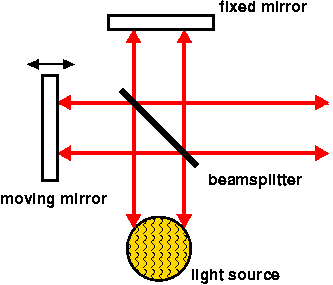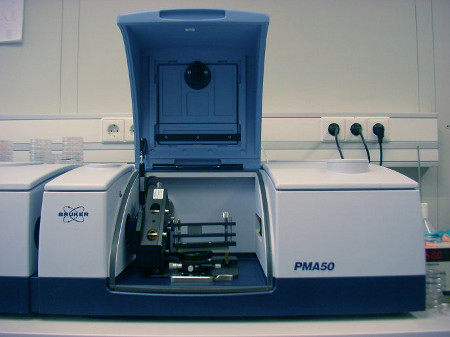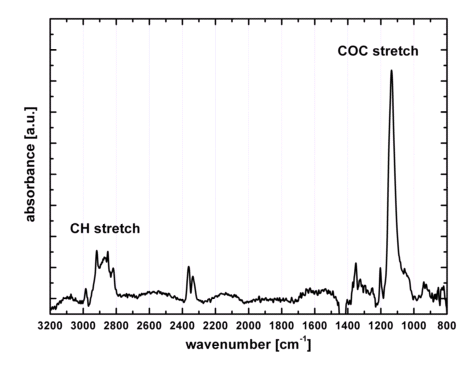Infrared Spectroscopy
Infrared absorption spectroscopy can be used to probe the
vibrational modes of molecules via resonant excitation. Since the
energy of the absorbed light is characteristic for the chemical
bonds and masses of the atoms, infrared spectroscopy is a
relatively simple method to identify unknown substances or check
the purity of a given sample. Further details can be found in this
introduction to infrared spectroscopy (in german).

|
For our measurements we use a Vertex70 and IFS48 FTIR
spectrometer from Bruker Instruments with a wide spectral range
(4400 - 250 cm-1), high sensitivity and a spectral
resolution better than 0.5 cm-1.
For better signal-to-noise ratio and faster scanning Fourier
transform IR spectroscopy (FTIR) has become popular. Using a
white light source and a Michelson interferometer setup with a
periodically moving mirror spectra are obtained from the
measured interference pattern by Fourier transformation.
|
Polarization-modulated infrared reflection absorption
spectroscopy (PM-IRRAS)
|
For surface sensitive IR spectroscopy - both at solid/gas
and liquid/solid interfaces - we employ the polarization
modulation technique which provides a practical method of
measuring and subtracting the background for thin film samples
on conducting substrates.
PM-IRRAS instruments as the PMA50 shown here effectively
achive the necessary subtraction by rapidly modulating the
polarization and using a lock-in amplifier to extract the
signal. IRRAS spectra with a very low signal-to-noise ratio
can thus be obtained.
|

|

|
Recently, we studied the protein-resistivity of organic
monolayer (SAMs) on gold-surfaces
using in situ FTIR measurements.
The understanding of this resistivity is regarded as essential
for the construction of implants for the human body and
sensory elements for the detection of specific proteins.
|
For our previous work on IR spectroscopy, see our list
of publications.
References
[1] H. Günzler, H.-U. Gremlich, IR-Spektroskopie, Wiley-VCH 2003
[2] Griffith, de Haseth, Fourier Transfom Infrared
Spectroscopy, John Wiley & Sons, New York, 1986


